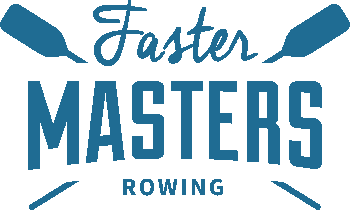Transporting your single scull on a car roof rack can be a convenient way to get your boat to the water especially if you can’t get a rack at your rowing club. Car topping to regattas and that important first drive after buying a new boat means you may have safety concerns and challenges. From ensuring stability to adhering to road safety measures, here are some tips to help you transport your single scull with confidence .
1. Securing Your Single Scull
One common concern among rowers is whether it’s necessary to tie a bowball down when car topping a single scull on a roof rack. The answer? It depends. If your car roof rack is sturdy and well-designed, you may not need to tie the bowball down. However, if you notice any wobbling or instability, it’s advisable to secure the bowball to prevent potential accidents or damage to your boat and car.
To tie down the bow ball securely, follow these steps:
- Choose the Right Straps: Use high-quality straps or tie-downs designed specifically for securing boats to roof racks. Avoid using ropes or cords that may stretch or fray over time.
- Position the Boat: Before securing the bow ball, ensure that your single scull is positioned correctly on the roof rack. Center the boat on the rack and align it parallel to the vehicle to distribute weight evenly. Check overhang at front and rear aligns with local road safety rules.
- Attach the Straps: Place one strap over the bow ball and another strap over the stern canvas of the boat. Make sure the straps are positioned around the boat without any twists.
- Tighten the Straps: Pull the straps so they are straight but not taut. You want to allow a bit of slack as the boat will bounce when the road surface is uneven. To get a snug fit around the boat, you can use electrical tape around the strap and hull. Do NOT pull the strap tight. If wind gets under the boat or you hit a pot hole, this can cause the hull to crack because there isn’t enough flex in the tie down strap. For the bow ball, attach the strap to your car’s tow bar loop (under the front bumper/fender). For the stern, you may need to shut it into the boot / trunk if there isn’t a suitable place to tie to.
- Double-Check the Security: Once the bow ball is tied on, double-check the strap. Give the boat a gentle shake to test for a bit of movement / looseness – this is what you want.
Ron Sneddon kindly wrote us with this additional advice.
As the principal means of securing the shell to the car, I would respectfully suggest that the main roof rack and supplemental brackets should be covered first and that the bow ball and stern straps receive second priority. The fore and aft straps should be ancillary, and desirable, restraints.
You also caution against allowing a twist in the straps. I have found that a half twist will most often cancel the tendency of the straps to “flutter”, especially the longer fore & aft ones. The flutter is caused by the flow field around the moving car interacting with the strap causing a Von Karman vortex street. I did a Google search and found several illustration of this aerodynamic effect, which is pretty simple and easy to understand. When I had a shell to transport I tied down every strap with a half twist so as to not have to interrupt the trip to fix a flutter.🙂 The strap flutter might be responsible for fatigue failure(s) in lightly built rowing shells, never mind the annoyance.
Ron Sneddon, Masters Rower
2. Stabilising Your Car Roof Rack
Another issue rowers often face is a wobbly car roof rack when carrying a single scull. A shaky roof rack can be nerve-wracking and potentially dangerous, especially when driving at higher speeds. To address this concern, ensure that your roof rack is properly installed and tightened according to the manufacturer’s instructions. Additionally, consider using additional support, such as foam blocks or tie-down straps, to stabilise the boat and minimise wobbling during transit.
Get our newsletter
3. Ensuring Compatibility
Before loading your single scull onto your car roof rack, it’s essential to confirm that your vehicle is compatible with carrying a boat of its size and weight. Check your car’s owner’s manual and local road code to determine the maximum weight, overhang and capacity and any specific guidelines for roof rack usage. Additionally, make sure that your roof rack bars are wide enought apart to accommodate a single scull securely and safely. Most cars will need a specialist rowing boat rack attached to the roof rack.
Find local suppliers of rowing boat racks for cars.
4. Taking Precautions
While transporting your single scull on a car roof rack, take precautions to protect both your boat and your vehicle. Inspect the roof rack and boat regularly whenever you stop on the journey. Check all straps and tie-downs in case they have shifted during transit. Additionally, consider using protective padding or covers to prevent scratches or dents to your boat and car.
5. Heavy boats
If you are like a friend of mine who has a coastal double scull which is heavy. She uses a roof rack that mounts onto the tow bar – it allows a tip to 45 degrees and she can get the boat onto that, then push it forward onto the main roof rack bar.
I think Rhino sell these and I’m sure other brands do as well. This one has the specifications:
- Adjustable height and tilts to allow access to tray.
- Adjustable height and tilt position (min height: 950mm, max height: 1540mm)
- Width 1250mm
- Maximum carrying capacity 60kg / 132lb

I found all these rowing car rack systems on the Rowing Directory – bookmark the page for when you next need to find a rowing product supplier.
- Rowing Design UK Tim Crooks boat rack
- Revolution Rowing US racing single scull and coastal single
- Burnham Boat US car top systems
- Rowing Center UK rack for 1x and 2x
- Neaves UK car transport rack
- PBR Australia vehicle roof carry rack
- Fluiddesign US/CA boat rack
- Adirondack Rowing US Vee shell rack
Travel safe!


